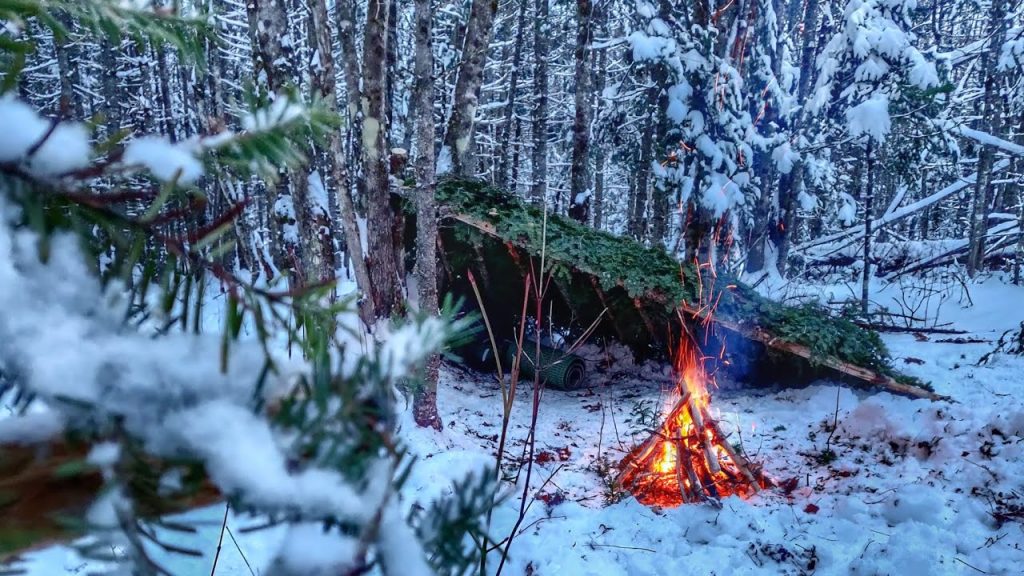Winter Camping Survival
In many areas of the US, including much of the Southeast, Southwest and Pacific coast, winter camping is not a drastic departure from camping at any other time of the year. But, in the high country and mountains where snow is bountiful there are a few things you can do to make sure you are comfortable and safe while traveling over and camping on snow.
Contents
When going into the field in snowy conditions you must first consider how you are going to travel. If it’s early spring and the snowpack is shallow or hardpacked you might consider just hiking in your sturdy leather boots. If the snow is less consolidated you should use snowshoes or cross country skis to travel. You can usually expect to do about two mph on snowshoes and about four mph on skis over level terrain. Also, consider that your route will be significantly less obvious than simply following a packed or blazed trail during the summer months. Be sure that you have a good map and even better compass. Take turns breaking. Keep a steady pace that prevents you from sweating too much then getting chilled when you stop to rest. And, if you are in avalanche country, make sure you know enough about snow dynamics to keep yourself safe.
Weather
Respect the fact that mountain weather can change quickly and it can be severe. Make sure you pack enough clothes and gear to stay warm and comfortable, and enough food to last an extra day or two in case you are pinned down by a storm.
Sleeping
- Drink a hot drink right before bed.
- Keep some food with you during the night. If you get cold, eating will increase your body temperature.
- Wear a hat to bed.
- Don’t zip up your sleeping bag with your sweetheart’s – you’ll both just sleep colder.
- In very cold conditions, use two ground pads – one closed cell and one inflated.
- Pour some hot water into a heat-safe water bottle and bring it into your sleeping bag with you.
- Get a sleeping bag that is warm enough for the conditions you are expecting.
- Use a four- season tent, or make sure to use a waterproof ground cloth with your seam-sealed three-season tent to keep moisture from coming through the bottom of the tent.
- Keep the vents open in your tent to prevent condensation from freezing to the tent’s ceiling.
Dressing
Cold weather requires you to really think through what you’re going to wear to stay warm. The best way to stay warm and dry is to dress in layers. Start with a wicking layer (both top and bottom) that will transport sweat and moisture away from your skin. Next, put on an insulating layer like a fleece jacket or wool sweater. Finish with a wind and waterproof shell layer that will help trap heat and keep you from getting wet from the outside conditions. Add, remove or vent layers as necessary and always remember to put on dry wicking layers and socks if they have gotten damp while hiking.
Light
Unlike summer camping, where the sun rises at 5:30 am and doesn’t set until 9pm, winter light only gives you eight or so hours of light each day to break camp, travel, and set up your new camp. This also means that night lasts up to 16 hours. So bring good company, a good book and a candle lantern, which will give you a nicer, warmer light than a flashlight and burn for hours on a single candle.
Extra Tips
- Pack more fuel – for melting snow into water and cooking in the cold.
- Stay hydrated – cold dry winter air just sucks the moisture out of you with every breath.
- Always keep something between you and the ground – sit on your pack or a pad when resting.
- Consider renting gear instead of buying it until you decide whether you like winter camping.
- Always wear gaiters when hiking or snowshoeing – this will prevent your socks, boots and feet from getting wet.

